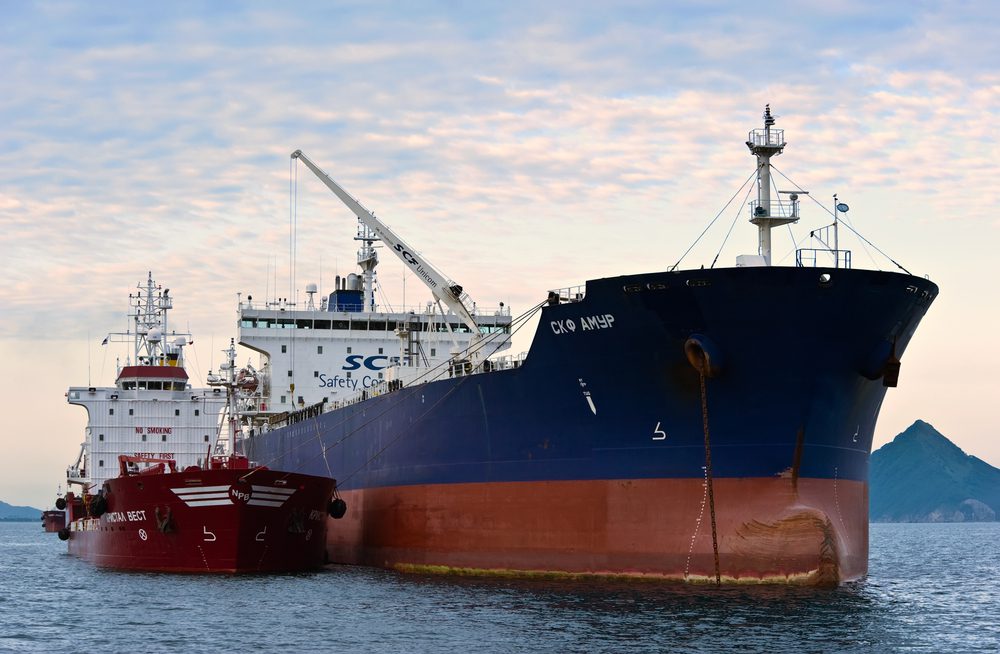Iranian Ship Linked to Houthi Attacks Heads Home Amid Tensions
(Bloomberg) — An Iranian ship that’s been linked to Houthi attacks in the Red Sea is returning home, removing a prominent asset in the area as the Islamic Republic braces...


![]()
![]()
SINGAPORE, Aug 20 (Reuters) – A slide in marine fuel prices to six-year lows should be a welcome break for global shipping – by slashing costs for an industry struggling to recover from its worst downturn in decades.
But shippers say the benefits on some routes risk being short lived as cheap fuel is encouraging firms enjoying better rates to ditch “slow steaming”, a practice started from 2007 to operate ships below maximum speed to save cash after a jump in fuel prices.
This means that at a time when a slowing Chinese economy is hitting international trade an increase in the speed and number of trips on some routes could weigh on cargo rates and hit demand in a sector already suffering overcapacity.
“Low bunker fuel prices are a negative factor as they lower the freight rate level at which ships will speed up and thus increase shipping supply,” said Mats Berglund, chief executive at dry bulk shipper, Pacific Basin Shipping.
Prices of Benchmark 380-cst marine fuel prices in Singapore have halved over the past year in line with a slump in crude prices to around $250 a tonne, a level last seen during the global financial crisis in 2009.
Lower bills for marine fuel, also known as bunker fuel, have helped companies like Hong Kong’s Orient Overseas Container Line, a unit of Orient Overseas (International) Limited , and Singapore’s Neptune Orient Lines achieve a 25-40 percent cut in operating costs in the first half, the firms said.
Maritime consultancy Drewry estimated a container shipper operating 11 18,000 TEU (20-foot equivalent units) ships on a single Asia-Europe route would save more than $69 million this year over 2014 assuming average bunker prices of $370 a tonne.
Drewry does not expect container ships to speed up sailing to avoid the risk of flooding the market with capacity, but ship operators are running more quickly on some routes.
SUPERTANKERS
Supertankers in particular are increasing their speed on empty return voyages between Asia and the Middle East, accelerating from 10 to 13 knots, shippers say, cutting the average sailing time between Singapore and Fujairah in the United Arab Emirates, for example, by three days.
Based on current fuel costs, this could increase spending by about $15,000 on the route for a very large crude carrier.
The additional fuel costs only currently make sense in the tanker segment, where freight rates have been more buoyant, although dry bulk shippers are concerned any strong recovery on dry bulk rates could encourage operators to speed up.
“We have seen some requests (from charterers) to go faster on the tankers on ballast legs, but not on bulkers,” said Tim Huxley, managing director of Hong Kong-based Wah Kwong Maritime Transport Holdings, a cargo ship owner.
A bulk carrier transports commodities including iron ore, coal, steel products and grain, while a ballast leg refers to when a ship is not carrying cargo.
The shipping sector is also worried about the impact on trade of China’s slowing economy, whose share of global container throughput almost doubled between 2000 and 2014 to around 30 percent, according to Drewry.
The Baltic Dry Index, a basket of dry cargo freight rates, hit an all-time low of 509 this year and has since recovered above 1,000, though remains far from its peak near 12,000 in May, 2008.
Tanker freight rates, on the other hand, hit a five-year high of $95,000 per day for a VLCC voyage from the Middle East to Japan on July 20, helped by strong demand from Asia, though some recent data on Chinese crude demand and car sales have started weakening.
(Editing by Henning Gloystein and Ed Davies)
(c) Copyright Thomson Reuters 2015.
Join the gCaptain Club for curated content, insider opinions, and vibrant community discussions.


Join the 105,968 members that receive our newsletter.
Have a news tip? Let us know.
Access exclusive insights, engage in vibrant discussions, and gain perspectives from our CEO.
Sign Up




Maritime and offshore news trusted by our 105,968 members delivered daily straight to your inbox.



Essential news coupled with the finest maritime content sourced from across the globe.
Sign Up